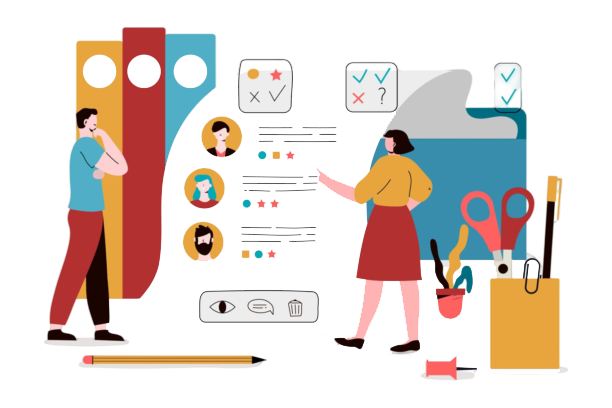
Creating a Culture of Continuous Learning: The Impact on Recruitment and Retention
The traditional “job for life” is outdated and continuous learning has become more important than ever. Rapid tech advancements, changing industry standards, and shifting markets mean staying stagnant isn’t an option for companies that want to grow. Unlike the past, when a degree could last a career, today’s professionals must keep learning to stay relevant.
Organizations need to transform their cultures to emphasize continuous learning. This not only boosts employee skills but also significantly impacts recruitment and retention. This blog discusses the impact of continuous learning on recruitment and retention.
The Importance of Continuous Learning
Continuous learning fosters adaptability, innovation, and resilience. As industries evolve and new technologies emerge, the ability to learn and adapt becomes crucial for success. Employees who continuously learn are better equipped to handle changes and contribute to their organization’s growth. This mindset includes technical skills and soft skills like leadership, communication, and problem-solving.
In the past, career development followed a linear path. People got a formal education, entered the workforce, and followed a stable career trajectory until retirement. Lifelong learning wasn’t a priority, and professional development was limited to periodic training. However, today’s landscape demands a more dynamic approach. Organizations now see that fostering a culture of continuous learning is essential to stay competitive and ensure long-term success.
The Impact of Continuous Learning on Recruitment
A culture of continuous learning can significantly enhance recruitment efforts. Here’s how:
- Attracting Top Talent
Companies that prioritize continuous learning are more attractive to top talent. Job seekers today look for environments that promote personal and professional growth. Organizations that invest in learning and development are seen as progressive and appealing to high-caliber candidates.
- Employer Branding
A strong learning culture enhances employer branding. When a company is known for its commitment to employee development, it creates a positive image in the job market. Prospective employees are more likely to apply to organizations with a reputation for fostering growth and innovation.
- Diverse Talent Pool
Continuous learning initiatives attract a diverse talent pool. Programs focusing on upskilling and reskilling appeal to individuals from various backgrounds, including those without traditional qualifications but with the potential to succeed.
- Reduced Recruitment Costs
Nurturing a learning culture reduces recruitment costs. Investing in current employees’ development creates internal talent pools that can fill open positions, reducing the need for external hires and associated expenses.

The Impact on Retention
Retaining talented employees is crucial. A culture of continuous learning plays a major role in retention:
- Career Development Opportunities
Employees are more likely to work with organizations that offer clear career development paths. Continuous learning programs provide tools and knowledge for employees to advance, increasing job satisfaction and loyalty.
- Employee Engagement
Continuous learning fosters engagement and purpose. When employees feel their growth is supported, they are more engaged and motivated, leading to higher productivity and stronger commitment.
- Job Satisfaction
Learning opportunities contribute to job satisfaction. Employees with access to ongoing training feel valued and appreciated, creating a positive work environment and lowering turnover rates.
- Adapting to Change
In a culture of continuous learning, employees are better equipped to adapt to changes. Whether it’s new technology, processes, or market conditions, employees used to learning are more resilient and less likely to leave when faced with challenges.
- Internal Mobility
Continuous learning facilitates internal mobility. Employees who acquire new skills can move into different roles within the organization, keeping them engaged and reducing the likelihood of seeking opportunities elsewhere.
Implementing a Culture of Continuous Learning
Building a culture of continuous learning requires strategic planning and leadership commitment. Here are some steps:
- Leadership Commitment
Leaders must show a commitment to learning. This includes investing in learning programs, encouraging employees to take advantage of these opportunities, and leading by example.
- Personalized Learning Paths
Understand that each employee has unique learning needs. Offer personalized learning paths that match individual goals and organizational objectives.
- Technology and Resources
Use technology to provide flexible learning opportunities. Online courses, webinars, and digital resources can complement traditional training methods and make learning more accessible.
- Recognition and Rewards
Recognize and reward employees who engage in learning. This can include formal recognition programs, promotions, or financial incentives.
- Feedback and Improvement
Continuously evaluate and improve learning programs based on employee feedback. Stay attuned to emerging trends and adjust programs to meet evolving needs.
- Creating a Learning Environment
Foster an environment where learning is part of the daily routine. Encourage knowledge sharing, collaboration, and open communication.
Wrapping Up
Organizations prioritizing continuous learning attract top talent, enhance their employer brand, and reduce recruitment costs. They also retain engaged, satisfied, and adaptable employees who are committed to success.
By investing in continuous learning, companies create a resilient workforce capable of navigating today’s ever-changing world.
Boosting a culture of continuous learning is an investment in the future, ensuring sustained growth and innovation.
To receive and stay updated about related content:





